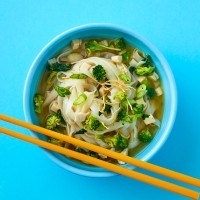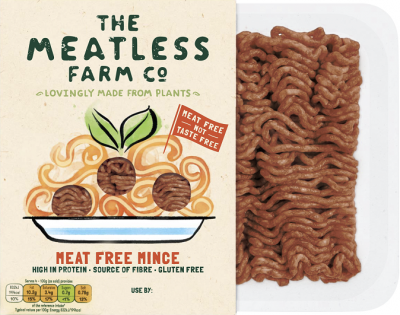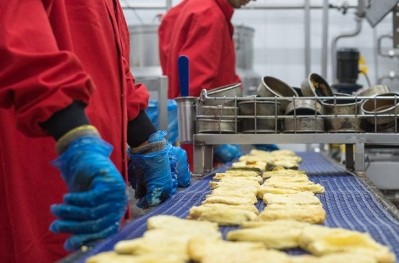Free-from foods
How lifestyle choices are driving free-from growth

While allergy sufferers remain an important focus, food businesses are starting to recognise that ‘lifestylers’ are by far the biggest segment driving growth in free-from new product development (NPD), especially when it comes to gluten- and dairy-free.
According to figures from Mintel, almost half of UK adults are choosing to avoid certain foods or ingredients, and 39% regularly buy free-from food and drink. And for most of these consumers, free-from is part of a broader healthy living philosophy, rather than a safety issue.
Observers, therefore, reason that successful free-from brands are those that combine free-from with complementary attributes such as health, sustainability, quality, and a top-notch eating experience.
“We are definitely seeing a rate of growth from people who are choosing to eat free-from foods rather than having to,” says Cathy Moseley, founder of upmarket snacking brand Boundless Nuts.
“Even though they don’t have intolerances there is a natural inclination to step away from eating too much gluten, soy and sugar,” she says. “People are more informed about where their food has come from and what nutritional value it gives them.”
Feelgood factors play a big part and free-from brands could learn from pushing a “better-yourself through food” ideology, suggests Damien Lee, chief executive and founder of Mr Lee’s Pure Foods Co, which makes a range of gluten-free noodle dishes. But this also plays into sustainability, as free-from is usually seen as the more environmentally friendly option, he adds.
“After my personal journey through cancer, I built Mr Lee’s Pure Foods upon the ethics of healthier, cleaner ingredients,” Lee says. “Our goal was set from day one, but finding practical manufacturing techniques to make my vision reality was the real challenge.
“Our products were only made possible through the use of technologies such as freeze-drying, in order to utilise clean, premium ingredients without the need for the likes of palm oil, monosodium glutamate, additives or preservatives. Admittedly, the costs are higher, but I built Mr Lee’s ... using top-end freeze-dried methods to show consumers the benefits of eating cleaner.”
The target customer

Rebecca Vercoe, Mrs Crimble’s brand controller at Wessanen UK, has a clear picture of the target customer for the brand’s gluten-free macaroons. “Those who choose to follow a gluten-free diet because it suits their lifestyle are typically digital-savvy females with an uncompromising attitude to great-tasting food. If it doesn’t deliver on taste, they simply won’t buy it again.”
Clean-label is pretty much a given now, but it’s even more important for those developing gluten-free products, claims Robert Lambert, marketing and communications chief with ingredients supplier Ulrick & Short. Few producers can afford to ignore the gluten-free juggernaut, he adds.
“There’s no doubt that gluten-free is a prerequisite for a lot of NPD projects. Because of this, many of our customers now will only consider gluten-free ingredients when developing new products and concepts.”
Healthy eating is a crucial selling point for lifestylers, says Vercoe. “There is rising demand for healthier products and the free-from market is no exception to this,” she explains.
“Free-from customers are often more concerned with a product’s health credentials compared with more mainstream products, as they already associate gluten-free with having a health benefit. We’re looking to innovate in this area and bring out lines that offer an additional health benefit to being gluten-free.”
With 54% of consumers finding free-from foods with health claims more appealing than those without, according to Mintel, products must go the extra mile for them to rise above their free-from status, suggests Paul Edwards, commercial director for UK and Europe at Rich Products.
The company supplies a range of dairy-free toppings and creams, and its latest dairy-free plant-based Cooking Crème is designed to be 100% vegan and free-from all 14 allergens recognised by the Food Standards Agency (FSA).
Responsible sourcing
“Clean-labelling is a big part of this,” says Edwards. “At Rich’s, we ensure that our products are sourced responsibly and sustainably, using the best possible ingredients, and this was a key element in the development of our new Cooking Crème. Consumers in this category are looking ‘beyond the label’ so it’s vital to be transparent.”
The product also ticks the healthy eating box, with no trans-fat or cholesterol, 89% less saturated fat and 12% less calories than dairy equivalents, adds Edwards.
Vercoe says that lifestyle customers opting for one free-from choice are more likely to embrace wider free-from options.
“There’s a strong correlation between gluten-free and dairy-free. We anticipate there’s going to be increased demand for products that are free from more than one of the major allergens and this is an area of development for Mrs Crimble’s.”
Lambert suggests that dairy and eggs, in particular, are increasingly targeted for replacement, thanks to another free-from trend that’s gaining momentum. “It’s impossible to talk about free-from without mentioning the growth of veganism,” he says.
“This has experienced a massive boom in the last few years, and the meat-free market is growing rapidly. We have seen growth in demand for our egg replacer and our range of plant-based proteins as an alternative to meat.”
While clearly already in good health, the free-from market could be further boosted by the establishment of accepted threshold doses for each of the 14 FSA-specified allergens.
Boosting the free-from market

This would enable food manufacturers to do away with many of the ‘may contain’ warnings found on packaging today, says Lynne Regent, chief executive of the Anaphylaxis Campaign.
“Thresholds have the potential to limit the use of precautionary allergen labelling so that it is only used where a food poses a real risk, while ensuring that people with food allergies are well-protected,” claims Regent.
A threshold dose has been established for gluten and Regent believes scientists are now confident they have enough information on threshold doses for 11 allergenic foods. This, she adds, will enable regulators in the UK to offer strong guidance to food manufacturers on the actions they need to adopt to protect people with food allergies.
“The Anaphylaxis Campaign, and many others within the food industry, believe that establishing thresholds for major allergenic foods has the potential for providing huge benefits for the food industry and consumers alike,” she says.
“However, as yet, timescales as to when this guidance may appear are unknown, and we would welcome a strong statement from the FSA and other bodies on this topic.”
But no firm date does not mean no progress is being made. At the end of January the European Food Safety Authority awarded a grant for institutions in Italy, the UK, Belgium and France to generate the necessary data on threshold doses, as well as harmonising methodologies for detecting and measuring high-priority allergens.
The ThRAll project is scheduled to last three years and costs €752,000 (£664,000). The UK arm is led by Professor Clare Mills at the University of Manchester who, with her team is tasked with generating a publicly accessible dataset of minimum eliciting doses.
















